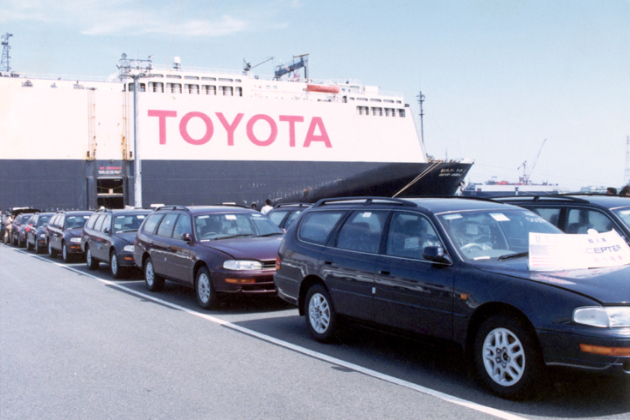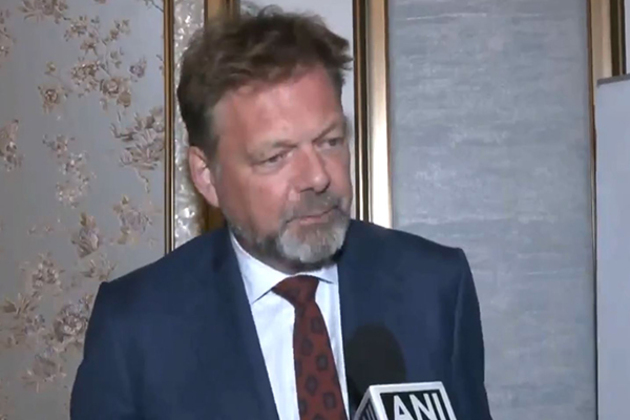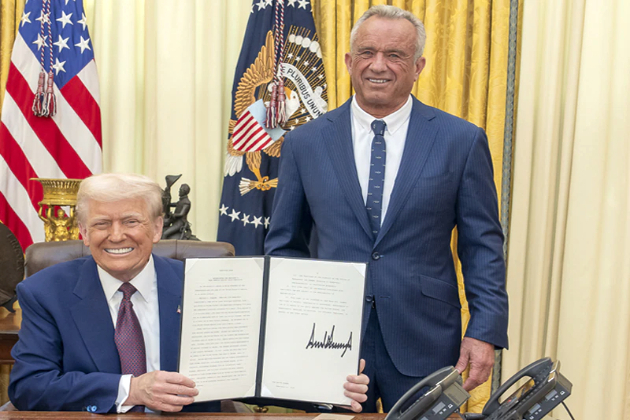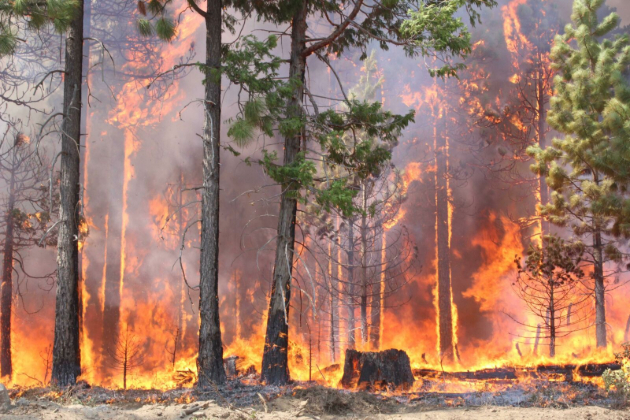Breaking the ice: How Russias nuclear fleet outpaces rivals
RT.com
03 Apr 2025, 00:35 GMT+10
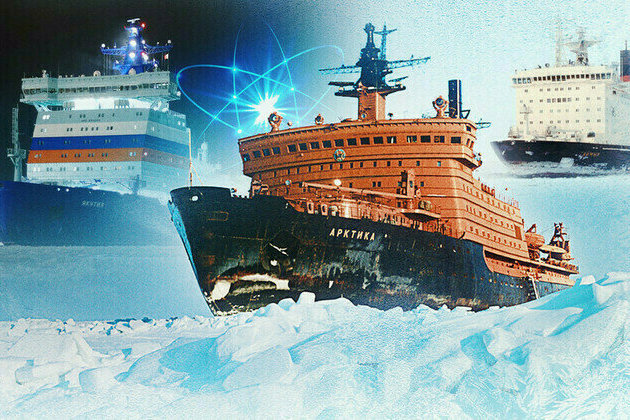
The Cold War never ended it just moved to the Arctic and got nuclear
In late March, at the VI Arctic Forum held in Murmansk, Russian President Vladimir Putin declared Moscow's commitment to expanding its fleet of nuclear icebreakers.
"Russia already possesses the largest icebreaker fleet globally," Putin noted. "We must further solidify our position by commissioning advanced icebreakers, particularly nuclear-powered vessels uniquely available to us." He emphasized that "no other nation has a comparable fleet."
But what exactly can Russia's Arctic fleet accomplish?
A new generation
This Wednesday, the fourth nuclear-powered icebreaker of Project 22220, the 'Yakutia', completed sea trials and departed for operations along the Northern Sea Route (NSR).
The 'Yakutia' ranks among the world's most powerful nuclear icebreakers. The construction of Project 22220 icebreakers began in 2013, with plans to build at least seven ships. Three vessels - the 'Arktika', 'Siberia', and 'Ural' - have already entered service. The lead ship, the 'Arktika', was commissioned in 2020, becoming a flagship of Russia's contemporary Arctic exploration efforts. It was followed by the 'Siberia' in 2021 and 'Ural' in 2022. Two additional ships, the 'Chukotka' and 'Kamchatka', are currently under construction, and the keel for a seventh vessel, the 'Sakhalin', will be laid later this year. These icebreakers are constructed at the Baltic Shipyard in St. Petersburg, funded by Rosatom's Atomflot with state support.
width="560" height="315" src="//www.youtube.com/embed/ysRUE_JHI1c"
frameborder="0">
Advanced nuclear icebreakers such as the 'Yakutia' are specifically engineered for harsh Arctic conditions, and are capable of breaking ice up to three meters thick. Their unique hull designs enhance maneuverability in extreme cold and dense ice environments. Equipped with two nuclear reactors generating a combined 60 megawatts, they can operate autonomously for several months.
Today, these vessels represent the most powerful and efficient icebreakers worldwide. Importantly, Russia has significantly reduced reliance on imported components, with domestically produced parts comprising 92% of each ship. Ultimately, Russia aims for complete self-sufficiency in producing all components for future nuclear icebreakers.
width="560" height="315" src="//www.youtube.com/embed/N32H09fWLdM"
frameborder="0">
Project 22220 icebreakers are versatile, designed for both open ocean and river channel navigation. Their design integrates the strengths of previous-generation vessels, such as the ocean-going 'Arktika' and the river-focused 'Taimyr'. Adjustable ballast tanks can be filled with seawater to increase draft and enhance icebreaking capability.
'Yakutia'-class icebreakers are intended to replace older ships nearing the end of their operational lives. As the newer icebreakers enter service, older vessels such as the 'Taimyr', 'Vaigach', and 'Yamal' will eventually be decommissioned. While their operational lifespan has been extended until 2027, these aging icebreakers will ultimately be succeeded by more advanced and powerful vessels.
width="560" height="315" src="//www.youtube.com/embed/TVY8xXEoPAo"
frameborder="0">
What's at stake?
Currently, Russia's Atomflot operates nine nuclear icebreakers: the nuclear-powered transport ship 'Sevmorput', two river-class icebreakers ('Taimyr' and 'Vaigach'), sea-class icebreakers such as the 'Yamal' and the Project 10521 "50 Years of Victory," alongside the latest Project 22220 vessels.
These ships support Russia's rapid Arctic development and establish navigable shipping routes from Murmansk to Kamchatka along the NSR.
Characteristics of Atomflot icebreakers
RT / RT
Beyond nuclear icebreakers, Russia maintains conventional icebreakers and is constructing four non-nuclear, ice-class Project 23550 patrol vessels. This robust fleet significantly enhances Russia's capabilities for year-round maritime navigation in the Arctic, securing conventional shipping and safeguarding national interests in the region.
Why the Arctic matters
The Arctic region holds vast reserves of natural resources - oil, gas, minerals, and fisheries - which could significantly impact the global economy. Additionally, it offers strategic advantages for developing transcontinental shipping routes. Russia's Northern Sea Route could substantially shorten trade distances between Europe and Asia, connecting China, Japan, Europe, and the US East Coast. Nuclear icebreakers are essential for safely guiding vessels through Arctic ice.
Recently, the United States raised discussions regarding Greenland's geopolitical status. Clearly, the US, having fallen behind in Arctic exploration, seeks solutions to regain influence. Greenland, an autonomous territory within Denmark, holds strategic importance in the Arctic. In a world increasingly driven by resource access and shipping lanes, major powers such as the US aim to strengthen their presence, particularly amid rising activity by Russia and China.
However, the US currently lacks a nuclear icebreaker fleet comparable to Russia's and faces challenges even with conventional icebreakers, which severely limits its Arctic capabilities. Resolving Greenland's status alone won't overcome this strategic disadvantage. To effectively compete in the Arctic, the US would require substantial long-term investments to build an advanced icebreaker fleet, ensuring access to Arctic routes and resources.
Recognizing this, in 2020, the US announced plans to construct a new nuclear-powered icebreaker to strengthen its Arctic presence. Yet, while Russia's nuclear icebreaker fleet is already operational, the US remains in the early planning stages.
Perhaps international cooperation offers a viable alternative, but such partnerships must be mutually beneficial. Is the US prepared for collaboration, and would Russia be interested? These remain critical questions for Arctic geopolitics.
(RT.com)
 Share
Share
 Tweet
Tweet
 Share
Share
 Flip
Flip
 Email
Email
Watch latest videos
Subscribe and Follow
Get a daily dose of Illinois Intelligencer news through our daily email, its complimentary and keeps you fully up to date with world and business news as well.
News RELEASES
Publish news of your business, community or sports group, personnel appointments, major event and more by submitting a news release to Illinois Intelligencer.
More InformationNorth America
SectionToyota’s global output rises as Japanese buyers return
TOKYO, Japan: Toyota is showing signs of a steady rebound in its home market, posting a second straight month of rising global output...
Breaking the ice: How Russias nuclear fleet outpaces rivals
The Cold War never ended it just moved to the Arctic and got nuclear In late March, at the VI Arctic Forum held in Murmansk, Russian...
EU looks to India amid US Climate pullback
By Vishu Adhana New Delhi [India], April 2 (ANI): With the United States scaling back its global climate commitments, the European...
US senator breaks record by trashing Trump for 25 hours straight
New Jersey Democrat Cory Booker has given a marathon speech against the presidents policies on Capitol Hill US Democratic Senator...
Mountain factory powers seafood processing for global markets
This photo taken with a mobile phone shows workers processing seafood at the production workshop of Chongqing Jiajiarong Foods Co.,...
US court blocks DEI-related intel terminations
The ruling comes amid the presidents push to dismantle diversity, equity, and inclusion programs across federal agencies A federal...
International
SectionFDA, CDC, NIH face significant staff reductions, CMS less affected
WASHINGTON, D.C.: U.S. Secretary of Health and Human Services Robert F. Kennedy Jr. announced a significant restructuring of federal...
South Korea’s worst wildfires kill 28, destroy historic temples
ANDONG, South Korea: Wildfires in South Korea have doubled in size in just one day, making them the country's worst fire disaster....
Boeing to face trial this summer in 737 MAX fraud case
WASHINGTON, D.C.: Boeing is now heading to trial this summer, after a U.S. judge unexpectedly set a date in the criminal fraud case...
Wildfires rage in Carolinas as dry winds, downed trees fuel flames
RALEIGH/COLUMBIA: Dry weather, strong winds, and fallen trees from Hurricane Helene have sparked wildfires in North Carolina and South...
Red Cross outraged after killing of Gazan ambulance crews
GENEVA,.Switzerland - The International Federation of Red Cross and Red Crescent Societies (IFRC) has expressed profound outrage following...
Tesla to launch in Saudi Arabia next month after years of tension
RIYADH, Saudi Arabia: Tesla is finally entering Saudi Arabia, with a launch scheduled for next month—marking a significant shift in...

